Introduction
Sony’s full-frame A-mount DSLT models may appear to have fallen behind in popularity when compared with the company’s mirrorless E-mount series, but that hasn’t stopped them from updating two important zoom lenses. This lens and the previously-reviewed Vario-Sonnar 16-35mm f2.8 ZA SSM II have both undergone some relatively minor yet potentially significant refinements.
Like its sibling, this lens retains the same complex optical design of its predecessor, with 17 elements, two of which are ED to further reduce color blur, and two aspherical elements to lower spherical aberration and distortion. However, the new mark II version adopts enhanced T* coatings to reduce ghosting and to improve not only image contrast, but potentially also to aid contrast-detect focus systems. In addition, Sony has also improved the sonic-type AF motor performance and added compatibility with E-mount cameras with an optional mount converter. Like its sibling, the updated lens includes a dust and moisture resistant design, although it’s not clear if this refers simply to the lens mount or to other components, such as the focus and zoom collars and (AF, MF and Hold) switch panel.
Specification and Features
The new model focuses to 1.12’ (0.34m), measures 3.27 x 4.37” (83.0 x 111mm) and weighs a fairly hefty 34.4 oz (974g). It is available now at around $2,100 (USD), $150 over the original discontinued model.
- 17 elements arranged in 11 groups
- ED and aspherical elements
- Improved T* coatings
- Sonic-type AF motor with IF (internal focusing)
- Improved AF and compatibility with E-mount (via converter)
- Weather-resistant
- MFD 0.92’ (28 cm)
Measurements: High performance
With an overall DxOMark lens score of 21 points on the full-frame 24-Mpix Sony SLT Alpha 99, the revamped 24-70mm f2.8 ZA version II is an excellent performer optically. Sharpness levels are high in the centers from the initial aperture, and stopping down improves sharpness mainly in the outer field only.
Sony Zeiss Vario-Sonnar T* 24-70mm f2.8 ZA SSM II vs. Sony Zeiss Vario-Sonnar T* 24-70mm f2.8 ZA SSM: Improvement in uniformity at 70mm
Like its version II sibling, the updated model achieves a similar overall rating, but when looking more closely, the sharpness (acutance) profiles are slightly different. The differences are more noticeable in the outer field at the shorter focal lengths, where the older lens has slightly higher and more uniform sharpness. The exception to this, however, is that the uniformity at the longer is much improved over the version 1 model, although overall sharpness is very slightly lower. The new model has slightly lower distortion throughout the zoom range, but chromatic aberration, vignetting and transmission are essentially identical.
Sony Zeiss Vario-Sonnar T* 24-70mm f2.8 ZA SSM II vs. Canon EF 24-70mm f2.8L II USM vs. Nikon AF-S Nikkor 24-70mm f2.8G: Behind best-in-class for sharpness and uniformity
As you might expect, the Zeiss-licensed Sony compares reasonably well against rival offerings, although overall it still trails behind the Canon and Nikon equivalents a little. Although it has good sharpness centrally at the wide end and much improved uniform sharpness at the other, its rivals have generally higher and more uniform sharpness, particularly at the wider end of the aperture and zoom ranges.
The Canon in particular has consistent sharpness across the field. And while the Nikon’s uniformity leaves a lot to be desired, it has generally higher sharpness levels than the Sony (even if peak sharpness is the same, at 15P-Mpix). In fairness, the Sony has far superior control of chromatic aberration over the Nikon, along with lower distortion, although the Sony has slightly higher vignetting at 24mm.
Conclusion
As with its sibling, the new lens coatings have had a somewhat mixed effect on the sharpness levels across the field. While it has improved uniformity at 70mm, there are several instances where sharpness levels have dropped. It’s particularly noticeable at 50mm in the mid and outer field position. Overall, though, the lens is good performer. The addition of AF compatibility with the contrast detection AF capabilities of the E-mount cameras (using an optional adapter) and the weather sealing are significant benefits over its predecessor.


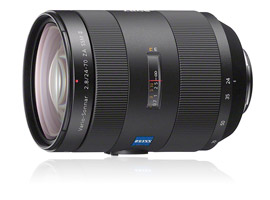


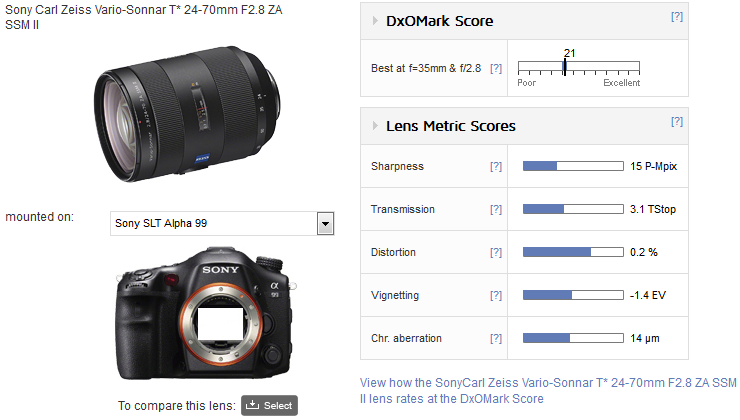
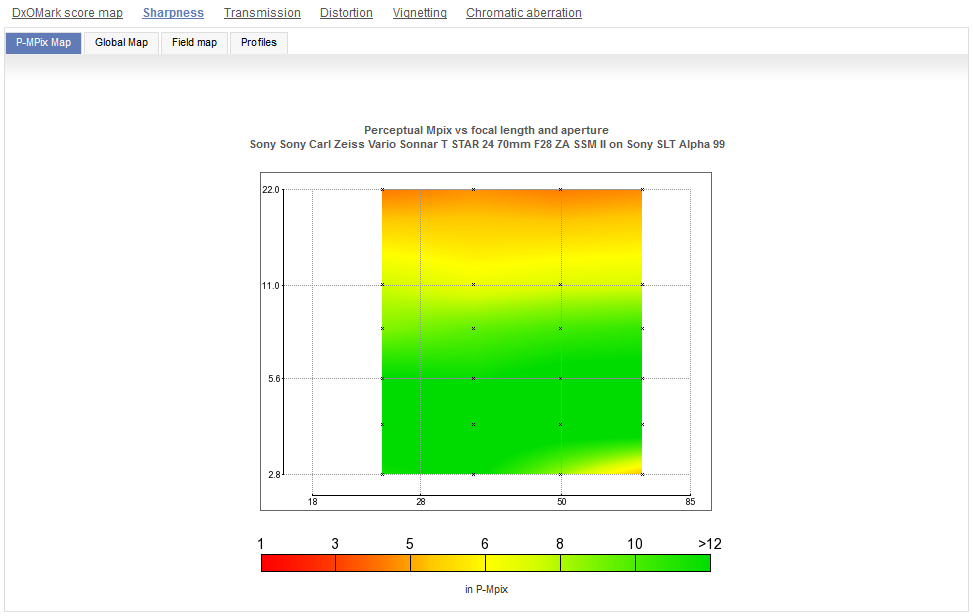
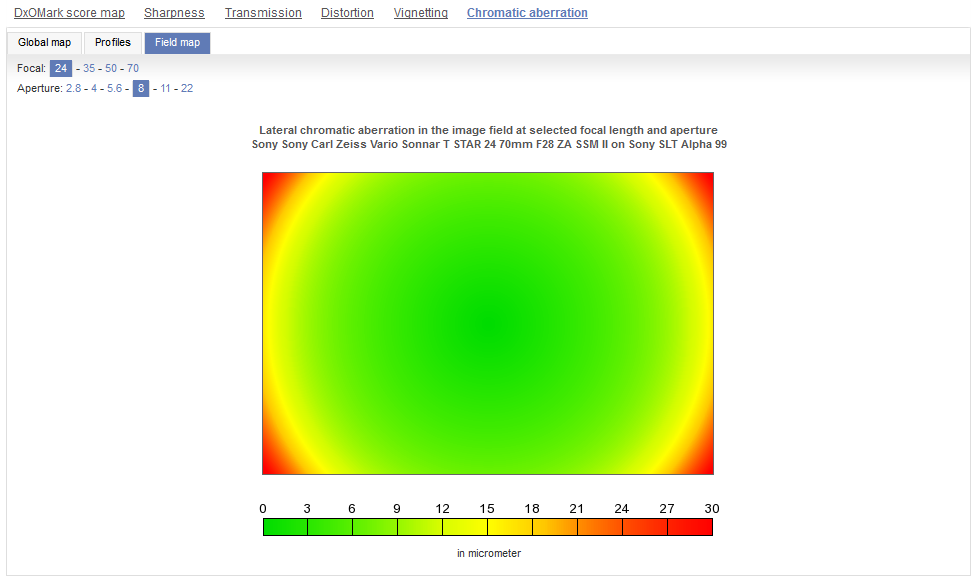

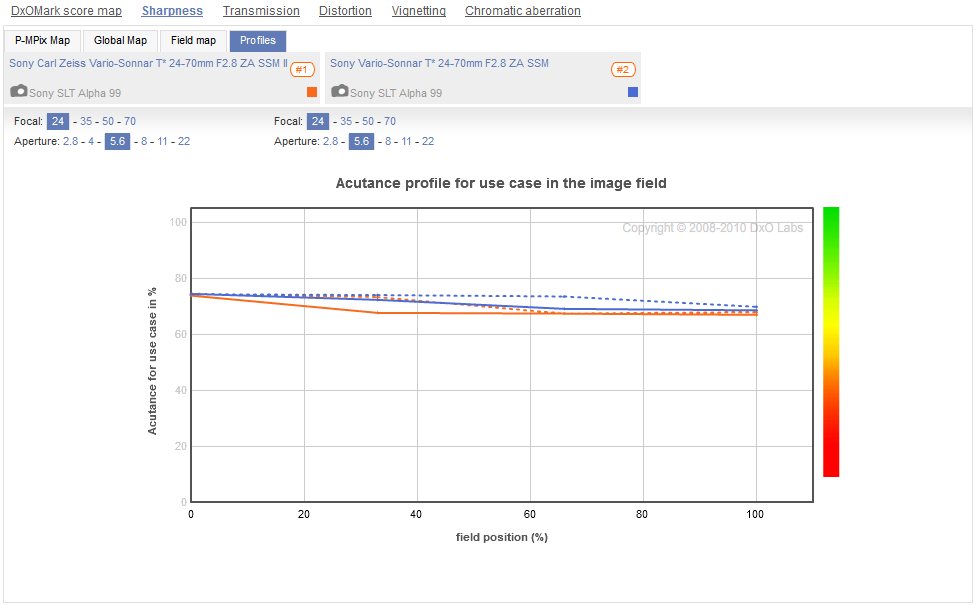
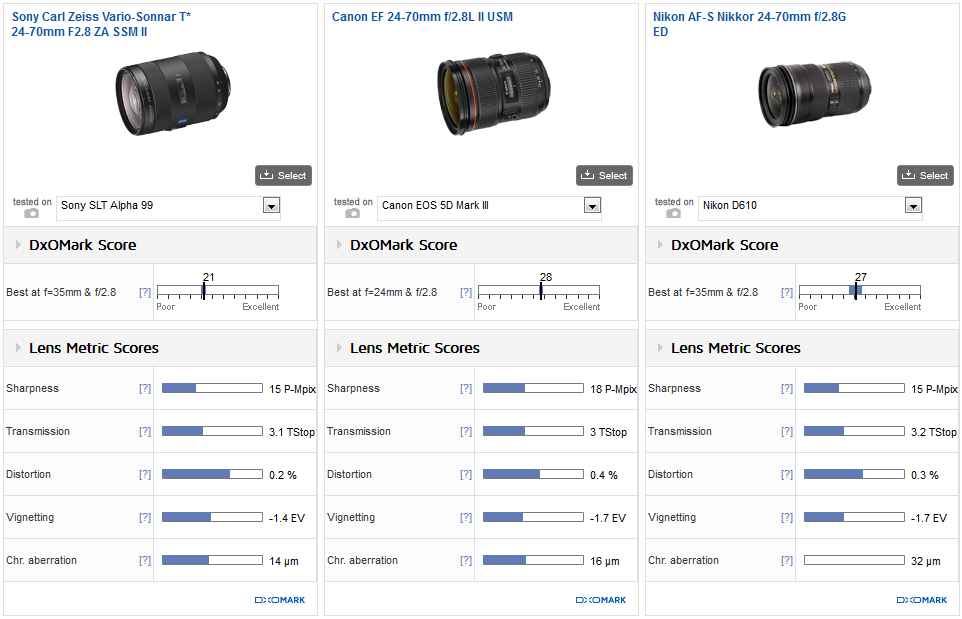
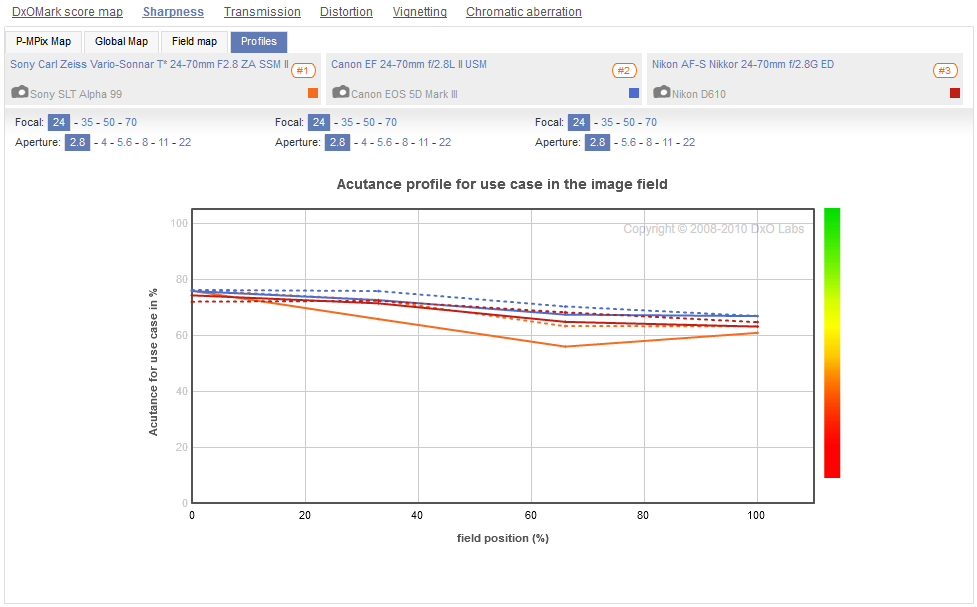
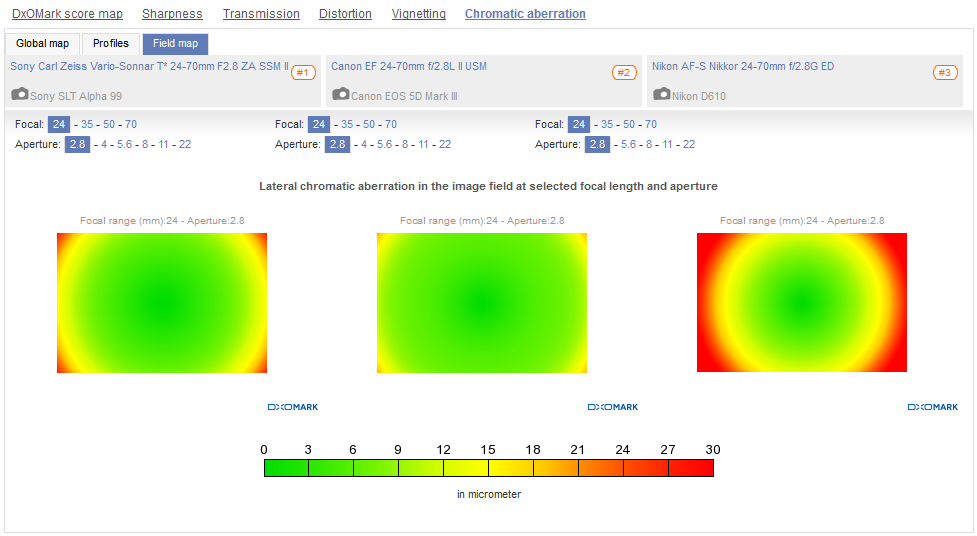
DXOMARK encourages its readers to share comments on the articles. To read or post comments, Disqus cookies are required. Change your Cookies Preferences and read more about our Comment Policy.